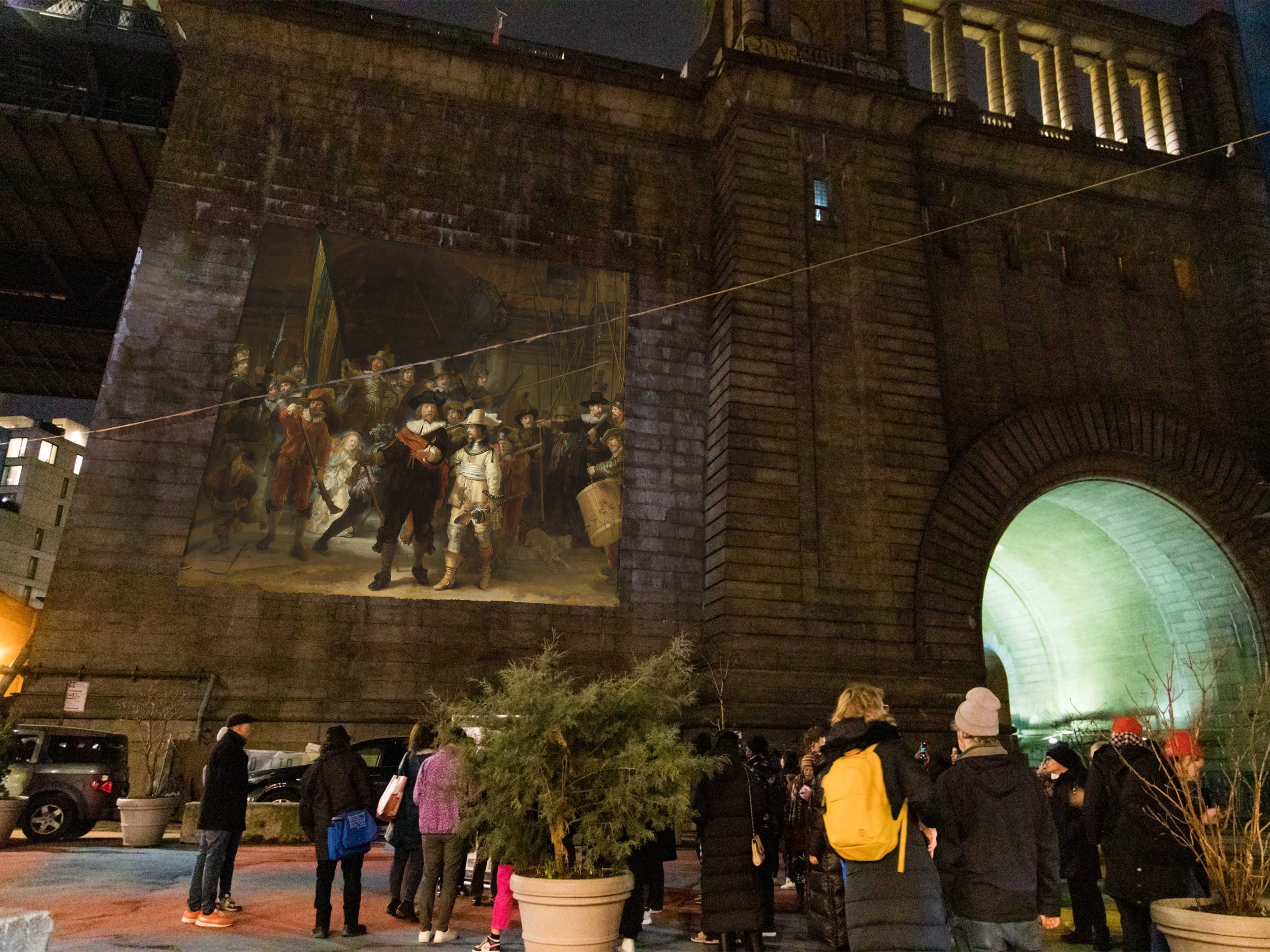1642
Fall 2023 +
Spring 2024
Course: Thesis
Instructors: Sharon De La Cruz, David Stein
I
At ITP, innovation, adaptation, and forward-thinking are guiding principles. However, this project takes a retrospective approach, leveraging contemporary tools and perspectives to revisit the past.
The core objective of this endeavor is to rejuvenate classical painting through modern technology. The focal point is one of art history’s most renowned masterpieces—‘The Night Watch’ by Rembrandt van Rijn. By integrating digital artistry with classical music, Rembrandt’s work is presented in an immersive and novel manner.
The rationale for selecting ‘The Night Watch’ lies in its significance during the Dutch Golden Age and its groundbreaking qualities for its time. Renowned for its dramatic use of light and shadow, and its dynamic composition, the painting diverges from the static, formal portraits typical of its era. It captures a moment in motion, imbuing the scene with a sense of life and vitality.
The vibrancy and depth of ‘The Night Watch’ have captivated audiences for centuries. These attributes render it an ideal subject for exploring innovative methods of art interaction.
II
The project’s goal is to honor Rembrandt’s extraordinary skill by presenting ‘The Night Watch’ in a dynamic and immersive format while incorporating an interpretive perspective. Additionally, this project underscores the importance of historical reflection in rediscovering and reframing the breadth of human creativity.
This project interrogates the concept of “listening” to a painting and reimagines its presentation to enhance educational and emotional impact for contemporary audiences. These inquiries have guided the work.
The culmination of this effort is a 15-minute film, projected at the original dimensions of the painting—approximately 15 feet by 12 feet. Here, excerpts from this film are shared.
The project began with deconstructing the painting into various layers, ranging from the prominent figures in the foreground to the background hall, represented through simplistic line drawings. Accompanying this visual deconstruction is the music of Baroque composer Vivaldi, whose energetic rhythms and stark contrasts mirror Rembrandt’s adept interplay of light and shadow.
III
What of the characters obscured or overshadowed within the painting?
Curiosity about the background—depicting a bustling hall during a mid-17th century Amsterdam militia march—led to a focus on these hidden layers from the outset. Through extensive research on Rembrandt, detailed study of the painting, exploration of 17th-century Dutch fashion and daily life, and insightful discussions with art history scholars, these obscured elements were successfully recreated, highlighting them with themes of celebration, commemoration, and public engagement, underscored by Handel’s ‘Music for the Royal Fireworks.’
IV
Moreover, the audience is invited to explore the intricate process behind each character’s creation. In the film, characters are animated stroke by stroke, synchronized with the accompanying music—evoking joy, emotion, and theatricality. For instance, while animating the lieutenant, the narrative, movement, national pride, and emotional resonance of Smetana’s ‘Ma Vlast’ align seamlessly with the character’s theme and background.
V
Rembrandt’s masterful use of dramatic light and shadow has profoundly influenced not only other paintings but also the fields of photography and cinematography. This technique, now known as ‘Rembrandt lighting,’ remains a fundamental element in visual arts.
The journey concludes with the powerful strains of Beethoven’s Coriolan Overture, whose dramatic intensity aptly complements the theme of ‘The Night Watch.’
This project, titled ‘1642,’ offers a glimpse into the vast expanse of human creative achievement. Numerous treasures await discovery and reinterpretation. Through this project, the grandeur, poetry, and beauty of the shared past are highlighted, paying homage to Rembrandt van Rijn, a painter whose life was as marked by tragedy as it was by acclaim.


